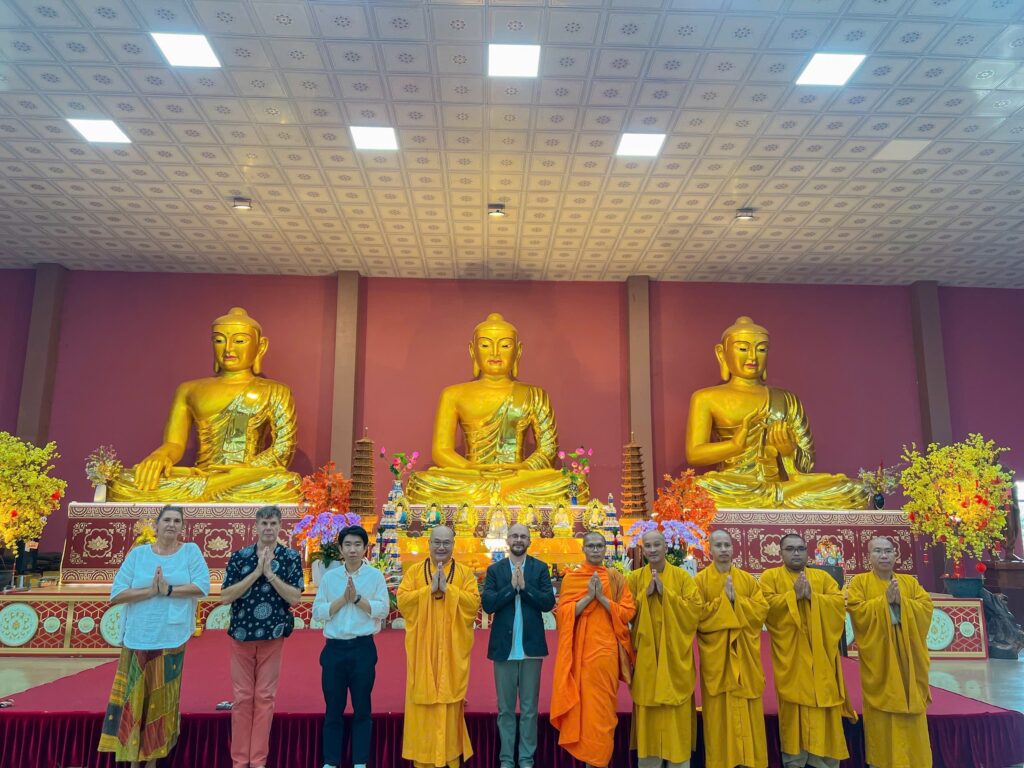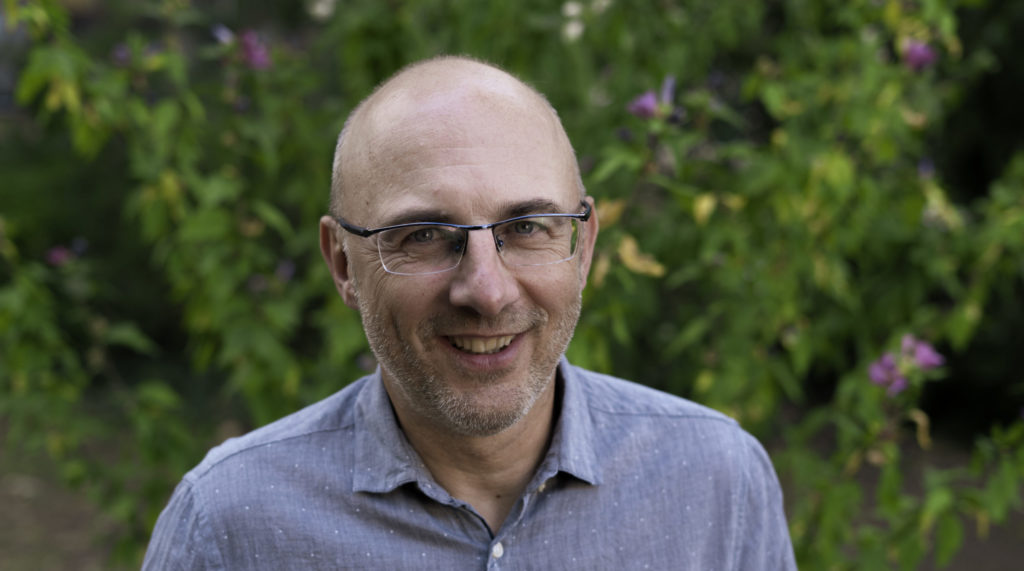

Associate Professor, Dharma Gate Buddhist College
(buddhist sacred text knowledge, scientific methodology, Pali language and text reading, Sanskrit language)
This peculiar being took form in 1988—on the drawing board of Kálmán Székely. Until then, it had probably existed only in the imagination of a few Brahmins, in who knows what shape. The illustration was made for the cover of my book Sanskrit Grammar, inspired by a verse fragment from the Rigveda (4.58.2d–3):
catvāri śṛṅgā trayo asya pādā dve śīrṣe sapta hastāso asya |
tridhā baddho vṛṣabho roravīti maho devo martyān ā viveśa ||
It has four horns, three feet, two heads, seven hands, and is tied three times – the bull roars. The great god entered the mortals.
According to tradition (Patanjali: Mahábhásja I.3 14-29), this bull symbolizes the Sanskrit language. The four horns represent the four parts of speech, the three feet represent the three tenses (past, present, future), the two heads represent the two essences of a word (eternal and current), the seven hands represent the seven grammatical cases, the three ties represent the three places of speech creation (chest, throat, head), and the bull’s roar represents the words spoken with sounds. This great god entered the human being. That is, humans are able to use language and speak because this bull has entered them.
Anyone who familiarizes themselves with the teachings of the Buddha usually does so through some linguistic product. A linguistic product can be a sutra translation, but also the instructions of a meditation master. What it is about, we essentially know through texts – the entire history of Buddhism is also based on written or spoken texts. In my work, I consider one of my tasks to be to extract, or rather to collaborate in extracting, what the original message of the Buddha might have been from the oldest texts, or generally speaking, what the original message of a Sanskrit or Pali text might have been. This is my researcher’s head.
My other task is to teach the language and what we have extracted from the text to those who think similarly about the texts. This is my teacher’s head, and it is the dominant one. So, I also have two heads, like the grammatical bull. My researcher’s head has two horns: a critical approach and the search for content coherence. My teacher’s head has two horns: mild rigor and playful joy. My horns sometimes break off, but they grow back.
My three feet hang in three earthly dimensions: one in the dimension of kind people, another in the dimension of music and reason, and the third in practical things. The fourth foot, which could hang in metaphysical dimensions like faith in God, life after death, miracles, and such things – did not grow out. But with three feet, I still hike well. I don’t usually roar, but from time to time I make unusual sounds. I enter the minds of college students – when they allow it.
Teaching Activities:
At Dharma Gate Buddhist College, from 1991:
ELTE BTK Indoeurópai Nyelvtudományi Tanszék (ELTE Faculty of Humanities, Department of Indo-European Linguistics), 1996-2000:
Lectures in the Indian Lecture Series organized by the Indian Embassy, from 1996
Summary of Professional Practice and Achievements:
Foreign Studies, Conferences:
Summary of Scientific / Professional Public Activities and International Relations:
Development of the curricula, credit system-based curriculum, and the Study and Examination Regulations of Dharma Gate Buddhist College (with others), since 1998
Lectures:
Language Studies, Language Exams: